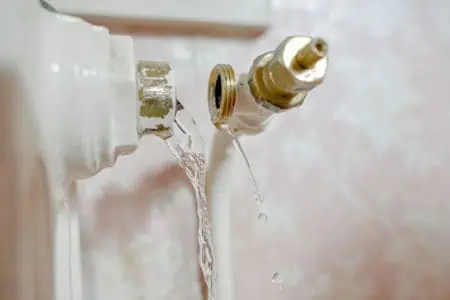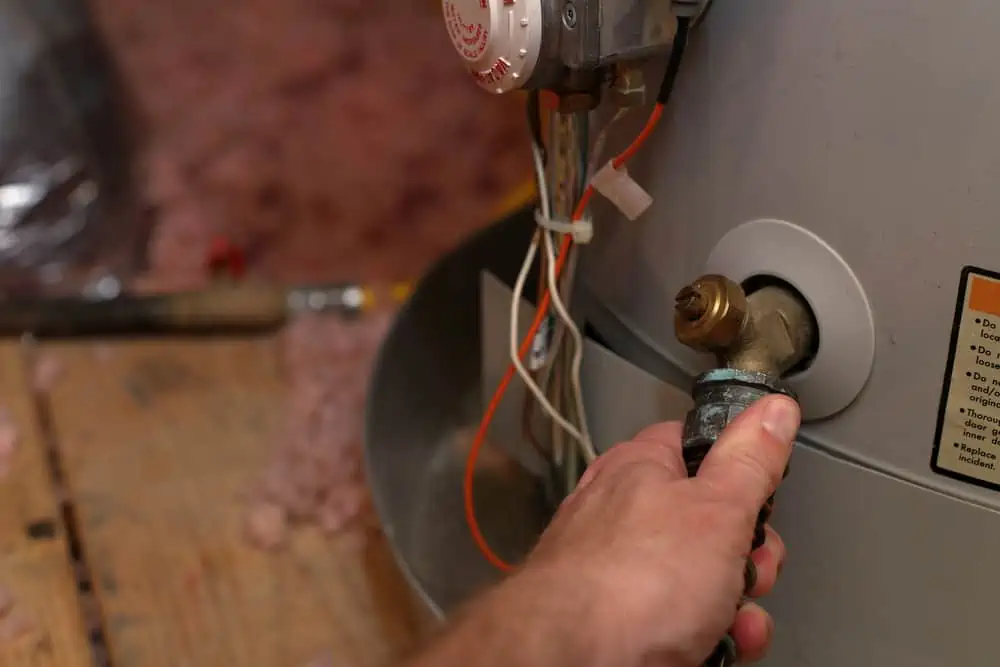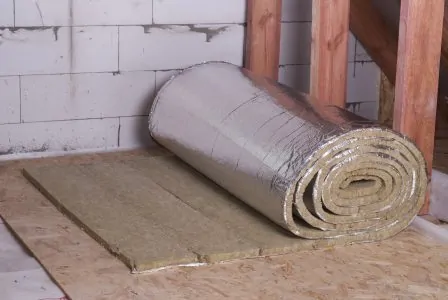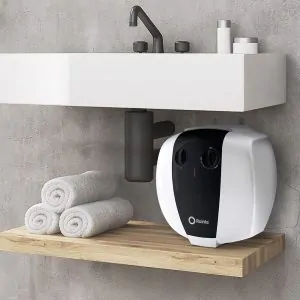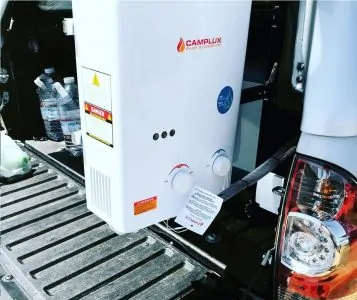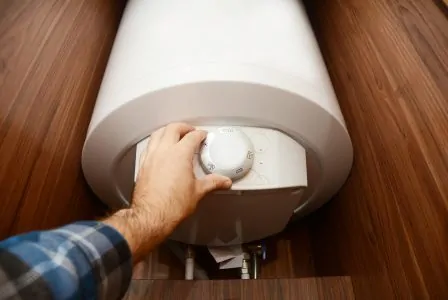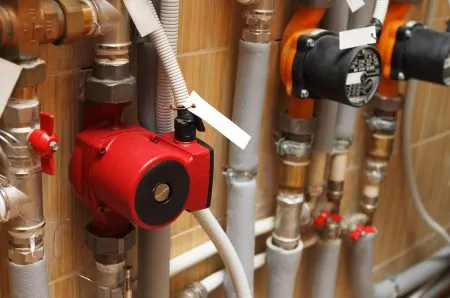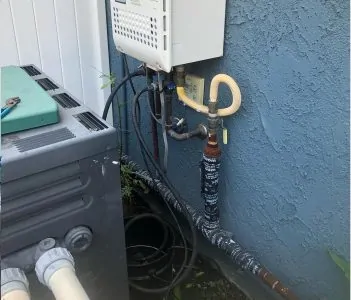Draining your water heater is recommended every six or 12 months. It forms part of your maintenance schedule to keep your water heater in working order. However, not everyone knows how to drain a water heater.
You’re in luck because we cover how to drain a hot water heater in this article and explain how long the process takes.
Key Takeaways
- Drain water heater every 6 or 12 months to prevent sediment build-up.
- Find the drain valve near the base of the water heater and attach a hose.
- Turn off the heater, flush the tank, and drain the water until it runs clear.
- Refill the tank, turn the water heater back on, and check for leaks.
How Often Should You Drain Your Water Heater?
Limescale and sediment build-up will coat your water heater’s heat elements and cause it to fail. The industry recommendation is to drain your water heater every six or 12 months. The frequency is also dictated by whether you live in a hard water area or not.
You might notice that it takes longer for your heater to warm the water, or maybe your energy bills have increased, but your usage hasn’t? These are tell-tale signs that your heater is working overtime because of sediment build-up.
Other common signs of sediment include:
- The heater makes a noise while running.
- Your hot water has a bad odor.
- Your hot water has a rusty color.
- The temperature fluctuates.
Should You Drain a Water Heater When Not In Use?
The simple answer is yes, but it becomes more crucial if you are away for periods longer than a few days. You probably don’t need to bother if you are away for the weekend, but it’s still a great idea to turn the heater off.
Where Is the Drain Valve on a Water Heater?
The drain valve is located near the base of the water heater. It looks like a tap and typically has a thread to attach a garden hose. Sometimes, they resemble a bathroom faucet.
How to Drain a Water Heater
The most important thing to do is gather the right tools and materials. Remember that planning prevents poor performance.
What You’ll Need
- Flathead screwdriver.
- Garden hose.
- Adjustable wrench.
- Bucket.
- Drain valve (optional).
- Threaded hose cap (if needed).
1. Start by Flushing the Tank
Without turning off the tank, use the water pressure to flush some water out. Attach the hose to the drain valve and open it fully. Keep it open for a few seconds, and then close it off.
The pressure forces the mineral deposit from the drain valve, which means the tank will drain quicker. If lots of sediment flows out, repeat this process.
Safety Note
Ensure that the water heater is full of cold water. Wait a couple of hours until the water cools if it’s hot.
2. Turn Off the Heater
The process for draining a water heater is the same for a gas and electric model. Flick the breaker switch to isolate the electrics to the heater. Shut off the water supply to the water heater.
Modern heaters have cut-off valves that isolate the boiler from the rest of the water system. These valves typically have a handle or a screw that you turn using a screwdriver. Older models may require you to shut off the whole water supply.
Open one or two faucets (one hot and one cold) in the house to protect the pipework and release pressure in the system. The ones closest to the tank are the best. Don’t panic if the flow weakens; it’s just the water draining from the pipes.
3. Open the Drain Valve
Ensure that your hosepipe is still attached and open the lever on the drain valve. Some drain valves operate with a screw that you can turn with a flathead screwdriver or adjustable wrench.
The water will start to flow quickly, so be sure to have the bucket handy. Shut off the drain valve and pour away the water when it fills. Open the valve again and refill the bucket.
4. Fill the Tank with Water
Once you’ve emptied the tank, shut off the drain valve and turn the water back on to refill the tank. This washes the inside of the heater and dislodges any sitting sediment that you didn’t get the first time.
Only fill the tank for a few seconds, and then shut the water off and open the drain valve. Once the escaping water runs clear, you have successfully flushed the tank.
5. Refill the Tank
The laundry room tap is probably the closest if your tank is in a basement. Turn the water on and wait while the tank refills. Remember to leave at least one hot tap open to relieve the pressure in the system and remove air bubbles.
For tanks located in an attic, the faucet in the bathroom directly below should suffice. Once the water flows freely from the tap, turn it off.
6. Turn On the Water Heater
Flick the breaker switch back to the “on” position. Relight the gas or plug the heater back into the mains and switch it on. Wait about an hour while the tank reheats, and you are ready to go.
Word Of Caution
Check the drain valve for leaks. Alternatively, you can attach the threaded hose cap to ensure no water leaks out.
How to Drain a Water Heater When It Won’t Drain
Knowing how to drain a hot water heater is one thing, but what do you do if the heater won’t drain? Here are a few tips to get you started.
Back Flushing
You’ll need a hose with two female adaptors. Attach one to the end of your nearest faucet and the other to the drain valve. Turn on the tap and let the water flow into the open drain valve. The force should dislodge the clogged sediment.
Forcing Air Into the Drain Valve
With the hose attached to the drain valve, slam your foot on the hose, and a blast of air will push through the valve, dislodging sediment.
A Wire Coat Hanger
Poking an unwound wire coat hanger through the valve may be enough to unclog the sediment. Be careful not to force the hanger too far in, or you might damage the valve.
You have to have the valve open to insert the hanger and move in circular motions to clear the maximum amount of sediment.
Top Tip
Don’t forget to have a bucket handy to catch the water when the sediment is removed.
Replace the Drain Valve
What if the problem is the drain valve rather than the water heater? A drain valve can become clogged so badly that the only option is to replace it. The good news is you can change the valve with the tank full.
Keep the faucets closed in the house, and the vacuum created by the pressure holds the water in the tank. Wrap a strip of Teflon tape around the thread of your new valve, and then gently unscrew the old one. Teflon tape seals the thread to prevent water leakage.
You will get some leakage, but only a little. Insert the new drain valve and screw it tight. If this method sounds risky, change the valve while the tank is empty.
Open Flushing
Rather than attaching a hose and filling a bucket, remove the valve and let the water flow down an open drain. You can only do this if the water heater sits next to a drain, like in a basement.
With no floor drain, you’ll need to stick with the hosepipe. Once the tank drains, you can poke around properly to remove the sediment.
How Long Does It Take to Drain a Water Heater?
When draining a water heater, the accepted flow rate is 10 gallons per minute, so a 40-gallon tank empties in just four minutes. Add a minute longer for a 50-gallon tank and two minutes for a 60-gallon heater.
FAQs
Final Thoughts
Knowing how to drain a hot water tank is not a specialist skill. All it takes is a little preparation and patience. While it may seem like an unimportant task, don’t put the heater’s maintenance on the back burner because it could cost you more in the long run.
